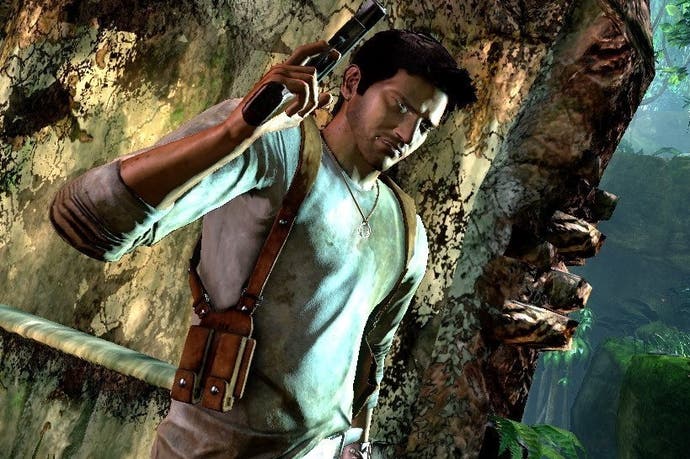Face-Off: Uncharted: Drake's Fortune on PS4
Digital Foundry tackles the opening chapter of the Nathan Drake Collection.
Let's cut to the chase here. Uncharted: the Nathan Drake Collection is a colossal undertaking on the part of Sony and its chosen developer, Bluepoint Games. Each of the games in the pack receives a sublime level of care and attention, making each title worthy of detailed analysis. With that in mind, we've decided to produce in-depth coverage for every game in the package, beginning with the most dramatically improved game in the remastered trilogy: Uncharted: Drake's Fortune.
With the upcoming release of Uncharted: the Nathan Drake Collection, it's time once again to revisit the game that started it all - Uncharted: Drake's Fortune. Featuring updated assets, improved performance, and sharper visuals, the 2007 original is reborn on PlayStation 4, offering the definitive version of the original Uncharted experience. We've already praised the Nathan Drake Collection as a whole, but in looking at each of the three games individually, it's clear that the original game benefits the most from these improvements. There are a lot of enhancements made to this game and each change feeds into the rest, resulting a more enjoyable and balanced overall experience.
As Naughty Dog's first attempt at a PlayStation 3 game, the talented development team was faced with its greatest challenge yet - the Cell processor. Starting life as 'Project Big', Uncharted was written entirely from scratch over the course of three years. Naughty Dog was already well known for its technical prowess but this new challenge pushed both the team and the PlayStation 3 itself to their limits. With relatively minimal SPU usage, a key to successful PS3 development, and such limitations standing in the way, the original game's potential was not fully reached. Yet, the title was delivered on schedule and, at the time, was considered a showpiece for the PlayStation 3. While revisiting the game for this article, however, we were surprised to discover so many technical flaws - the most noticeable of which is certainly the near constant screen-tear. Thankfully, on PS4, this bugbear has finally been put to pasture.
With Drake's Fortune on PlayStation 4, we're looking at a full 60fps with v-sync engaged. By and large, Bluepoint's work on this remaster turns in a remarkably steady level of performance - a near-locked 60 frames per second in all but a handful of sequences. When slowdown does rear its head, dips below 60fps are not accompanied by any torn frames, with the title maintaining image integrity from start to finish. Of the three games included in this collection, Drake's Fortune turns in the best performance.
This improvement is coupled with changes and improvements to the combat experience. The dead zone has been decreased, input latency reduced, and subtle changes made to control that enable Drake to more easily aim his weapons. In addition, for those that want a more relaxing experience, the Explorer difficulty mode even adopts a soft lock system, engaged upon pulling the L2 trigger. In either mode, headshots feel significantly more satisfying.
Damage values also appear to have been adjusted. While capturing the jeep section on easy difficulty, we noted that the player withstands more damage on PS4. This is balanced out by the inclusion of a new brutal difficulty mode, available after finishing the game on its crushing preset - a setting which is no longer locked at the start. It feels as if every aspect of the experience from gameplay to graphics was considering in remastering this game and that makes for a much better time.
Then we have image quality, which works in conjunction with frame-rate and response to help create a more enjoyable experience. The remastered version is bumped up to a full 1080p with a post-process anti-aliasing solution. When entering a new area, the increased resolution enables players to more quickly scan the environment for potential targets. In comparison, the PS3 original operates at 1280x720 with 2x MSAA. Multi-sampling is certainly the superior anti-aliasing technique here but when coupled with a lower resolution, a lack of alpha coverage, and plenty of shader aliasing, we have a strong preference for the solution used in the Nathan Drake Collection.
Another significant step forward lies in the use of anisotropic filtering. On PS3, trilinear filtering often results in highly blurry textures even at relatively gentle angles. There is a sense that much of the fine detail present in the original art is lost as a result. In the jump to PS4, we now see a high level of anisotropic filtering in use perhaps as high as 16x. Textures are sharp and crisp at all but the steepest of angles enabling the art to shine through.
Of course, these are standard improvements for any remaster project and there was never any doubt that Bluepoint Games would deliver on these points. What makes this project so much more impressive than your typical remaster is the amount of effort poured into improving everything else. Assets, lighting, and effects have all been rebuilt and reloaded for this new release.

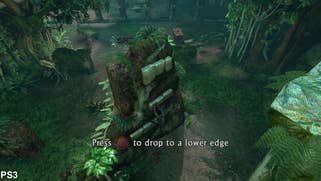


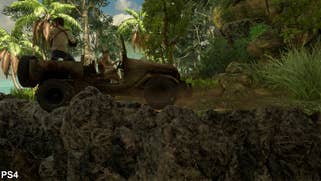

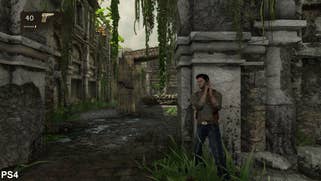
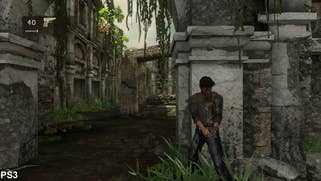
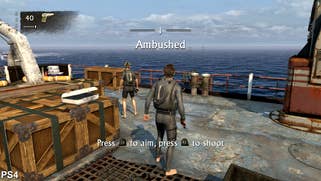
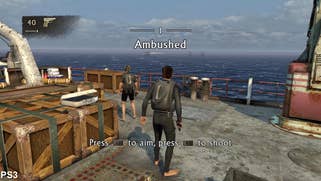
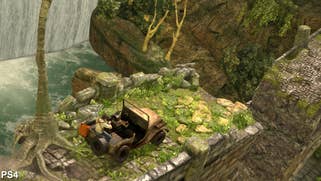

The most noticeable of these changes are texture maps. A large number of textures have been swapped with higher quality versions throughout the game. Swapping in new textures is a risky operation and one that can spoil the original art design but, in the case of Drake's Fortune, it feels like a genuine improvement all around. What's really surprising is how many incidental objects receive this level of care - barrels, cables, vines and more are all renewed. It feels as if the artists approached this project with a fine-toothed comb.
This also applies to character textures - faces now more closely resemble the characters as they appear in later games, with more realistic skin rendering both as a result of enhanced textures and improved shader work. Clothing too benefits from finer details enabled by higher resolution textures. Of course, all of these new assets are backed by faster texture streaming that manages to avoid the pop-in present in the original game.
Improved texture work goes hand in hand with another major enhancement - remodelled scenery, characters, and objects. A large chunk of assets are recreated for this collection, eliminating some of the more glaring issues. Rock formations with visible polygon edges now take on a smoother, more polished appearance on PS4. Archways are rounded off, objects receive more detail, and foliage is enhanced all around. Scenery that still holds up well remains intact, but so many of the original game's rough spots are completely eliminated. It's the kind of work we last witnessed with the remastered version of Grand Theft Auto 5.
Then we have changes to lighting and shadow. The sun shadow-map used across the outdoor environments is refined with a slight bump in resolution and filtering quality. The sun itself has also been re-positioned in certain scenes with shadow placement varying from the original game in many instances. Shadow-maps are also visible from a greater distance on PS4 - a situation reflected in much of the game's long range detail.
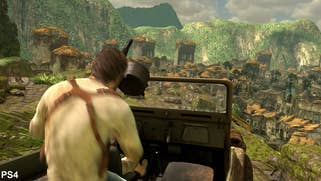
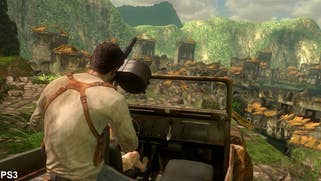
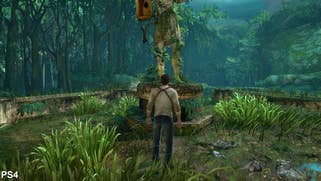

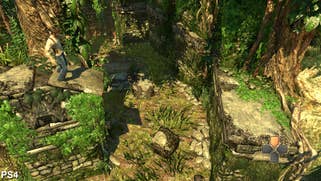
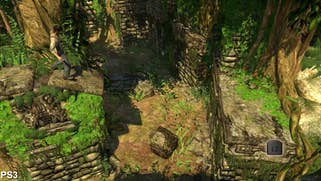
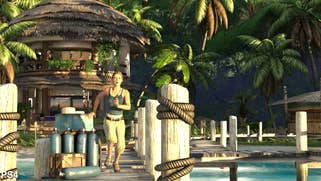
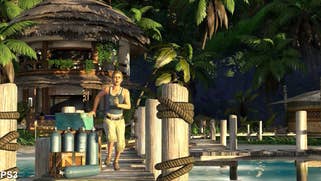
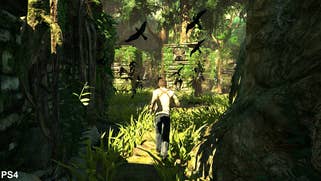

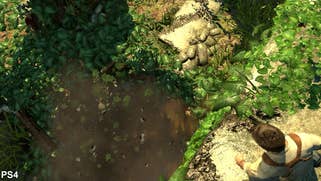
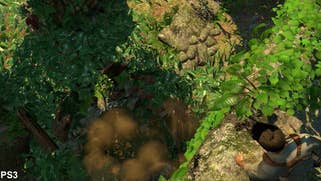
Indoors, the dynamic shadows utilised in a number of scenes feature much improved filtering compared to the dithered look on PS3. Many of the shadows used indoors also appear much higher in resolution. Curiously, we noted one specific instance in which dynamic shadows are removed. Early in the game, after lighting a pile of debris on fire, the PS3 version exhibits flickering shadows as the debris crumbles. On PS4, this has been removed.
Character shading has also improved with more natural lighting visible - particularly while indoors. The original version features a number of dimly-lit scenes in which characters exhibit a waxy complexion with overly aggressive specular highlights that have been corrected here. Ambient occlusion is also present in the remaster providing a greater sense of visual depth to the scenery.
Then we come to foliage - a key feature that plays a prominent role throughout the game. Grass is lit more naturally and appears in greater density, while many of the tree meshes are remodelled with additional triangles, giving them a smoother appearance. What's interesting about Drake's Fortune is the way in which grass is utilized: rather than utilising typical alpha textures for grass, individual blades are fully modeled objects placed in patches around the world. This allows Drake to more interact with individual pieces of grass while running through the level. It's a technique not unlike what was used in Metal Gear Solid 3 - Snake Eater.
Effects work sees plenty of improvements as well; explosion effects are modified, eliminating the infamous "grapefruit" explosions featured in the original game, while smoke effects operate at a higher resolution - the original used lower resolution alpha effects which often resulted in noticeable sawtooth edges around certain objects. That said, shadows visible on clouds of smoke are less visible now as a result of the change but the improvements are almost universally for the better.
Bluepoint's approach to motion blur is also exceptionally well-handled. The original Uncharted featured a basic camera motion blur that operated on the GPU. It was an extremely low resolution effect and one that only appeared to kick in when the camera was rotated at a high enough velocity. The remastered version now adopts the higher quality object motion blur first seen in Uncharted 2. This means characters, camera motion and in some cases, scenery actually benefit. Of course, this can be toggled off in the option menu should you prefer. We also ran a few tests to determine if motion blur has any impact on performance. In the case of Drake's Fortune, it does not. The few segments which exhibit performance dips produce identical results whether motion blur is enabled or not. Whether this is the case in the two sequels remains to be seen.
Storytelling plays a significant role in this series and most of these sequences play out using pre-rendered video clips. The original video files matched the resolution and frame-rate of the game but compression artefacts spoiled the look to some degree. With the PS4 collection, Bluepoint was tasked with cramming three games' worth of pre-rendered cutscenes onto a single 50GB disc. Keeping in mind that cut-scenes are upgraded to a full 1080p60, the storage requirements are significant. The selected method of compression looks great initially with fewer visible artefacts in comparison to the original game but as darker sequences begin to appear, unwanted macroblocking rears its head. Video quality is a definite step down from The Last of Us Remastered but still an improvement over the original game. It's not a deal breaker when considering the limitations at hand, but it is still a touch disappointing.
The assets used in these cut-scenes are fully upgraded to match the real-time gameplay so we're not simply left with higher quality versions of the original sequences. Interestingly, "dip to black" transitions are added to these sequences, allowing for smoother jumps between gameplay and cut-scene. While minor, this change definitely helps create a more polished experience. Loading times between the main menu and gameplay are greatly improved.
Uncharted: Drake's Fortune - the Digital Foundry verdict
Overall, Uncharted Drake's Fortune remastered feels more like the game we always wanted. The early days of PlayStation 3 development were difficult for everyone, including the highly talented Naughty Dog, and this remaster helps improve and resolve many of the compromises the developer made in its first PS3 project. By smoothing out performance issues, improving controller response, and making tweaks based on knowledge gained from creating two sequels, Drake's Fortune is a real joy to play, even now in 2015.
Later games would go on to become globetrotting adventures, but there is something intimate about spending the majority of the game confined to a single, mysterious island. Drake's Fortune has a few rough spots, of course, such as animation blending limitations and a few frustrating sequences, but it still manages to feel pretty fresh.
If you're planning on picking up The Nathan Drake Collection and still have a copy of the original PS3 game lying around, we'd recommend loading it up yourself to check out the difference. It looks great regardless, but revisiting the original will help players better appreciate the improvements made to the remastered version. Picking up the Dual Shock 4 after slogging through the PS3 original truly feels like a breath of fresh air. With its first chapter, the Nathan Drake Collection absolutely delivers - this is truly one of the finest remasters we've seen to date.
